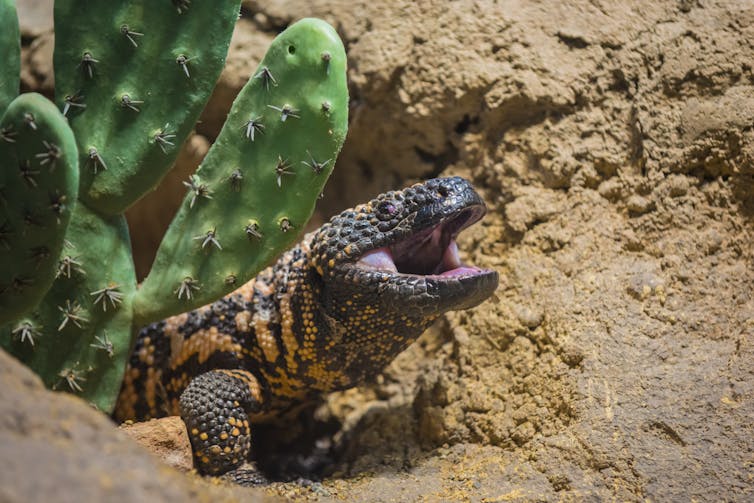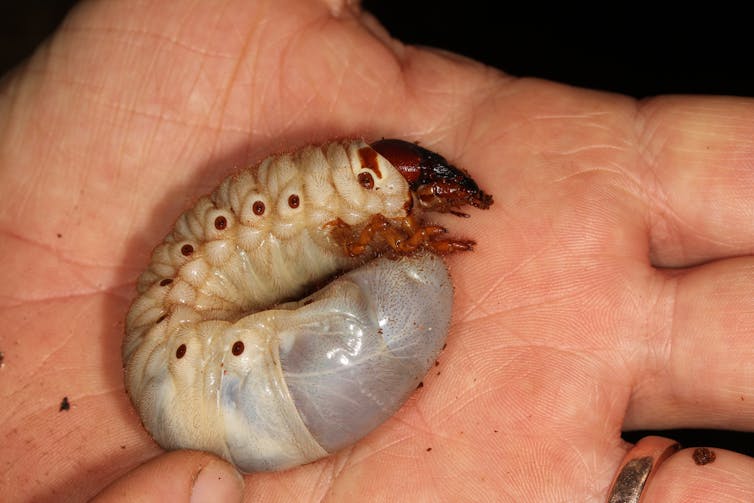For thousands of years humans turned to nature to cure and soothe their ills. Modern science built on these ancient foundations and the “natural product discovery” programmes established by pharmaceutical companies provided us with medicines that could treat cancer, infections and more.
But discovering medicines found in nature is far from straightforward. It’s hard enough to gather sufficient numbers of the useful organism, whether that be a tree root or a venomous snake, and it’s even harder to isolate the exact medicinal compound and then produce it in large quantities.
With all these stumbling blocks it’s no surprise that pharmaceutical companies shifted their focus from nature to the laboratory and began designing compounds from scratch, huge numbers of which could then be screened for promising activity. From the 1990s onwards the pharmaceutical companies duly terminated their nature discovery programmes and the huge collections of screening extracts they amassed were sold or disbanded.
Recent developments in genetics have prompted a shift back towards natural products, however. Scientists can now mine an organism’s entire DNA to search for useful compounds, and it is becoming increasingly evident that we have barely scratched the surface of nature’s molecular diversity, which has been honed by more than three billion years of trial and error. There are many more drugs still undiscovered, lurking within plants, animals, fungi and bacteria. This realisation, and looming health crises like the rise of antibiotic resistance, has renewed interest in the search for useful compounds in nature – known as bioprospecting.

Most nature-derived medicines today are sourced from plants, fungi and bacteria. Those medicines that have been extracted from animals have largely come from just a few sources: venomous vertebrates like the gila monster lizard or jararaca snakes, leech saliva, or the venoms and secretions of organisms like sponges or molluscs. But animals are incredibly diverse, and we’ve barely tapped into the potential pharmaceutical use of the most diverse group of all – insects.
Insects are full of useful compounds
Insects occupy every conceivable terrestrial and freshwater niche on Earth. Consequently, they have a bewildering array of interactions with other organisms, which has meant they’ve evolved an enormous variety of compounds to protect themselves or for preying on others.
Of the tiny proportion of insects that have been investigated, several interesting compounds have been identified. For example, alloferon, an antimicrobial compound produced by blow fly larvae, is used as an antiviral and antitumour agent in South Korea and Russia. The larvae of a few other insect species are being investigated for potent antimicrobials. Beyond flies, a compound sourced from the venom of the wasp Polybia paulista can kill cancer cells without harming normal cells.

So why is it that bioprospectors have paid relatively little attention to insects? The sheer variety is partly to blame – with many millions of species to search through, finding a useful insect is like looking for a needle in a haystack. And though we consider insects to be everywhere, the reality of this ubiquity is vast numbers of a few extremely common species. Most insects are hard to find and very difficult to rear in captivity.
And even when a useful species has been identified and reared successfully, it’s still incredibly difficult to obtain sufficient quantities of the relevant material. Insects are generally very small and the glands inside them that secrete interesting, potentially useful compounds are smaller still.
The search for friendly insects
The good news is that we can overcome some of these difficulties by using knowledge of natural history to target our efforts. Myself and David Wilcockson at Aberystwyth University term this approach “ecology-led drug discovery”.
Many insects advertise the production of potentially useful compounds in the way in which they live and where they live. Some produce potent, complex venom for subduing prey and keeping it fresh for their offspring. Others are masters at exploiting filthy micro-habitats, such as faeces and carcasses, where they are regularly challenged by myriad micro-organisms. The insects in both these examples have a battery of antimicrobial compounds to deal with pathogenic bacteria and fungi which could potentially serve as or inspire new antibiotics for humans.

Although natural history knowledge points us in the right direction it doesn’t solve the problems associated with the small size of insects and the tiny quantities of interesting compounds they produce. Fortunately, it is now possible to identify and then snip out the stretches of the insect’s DNA that carry the codes for the interesting compounds and insert them into cell lines that allow larger quantities to be produced.
As much as I’d dearly love to help develop a blockbuster insect-derived medicine, my main motivation for looking at insects in this way is conservation – I want drugs from bugs to generate funds for basic exploration, species discovery and natural history. All species, however small and seemingly insignificant, have a right to exist for their own sake, but this sentiment lacks the political clout needed to fight for the urgent preservation of nature. We need something more tangible, something that is directly relevant to people, and you would be hard pressed to find anything that is held so dear as health.
If we can shine a light on the darker recesses of nature’s medicine cabinet, exploring the useful chemistry of the most diverse animals on the planet, I believe we can make people think differently about the value of nature.

